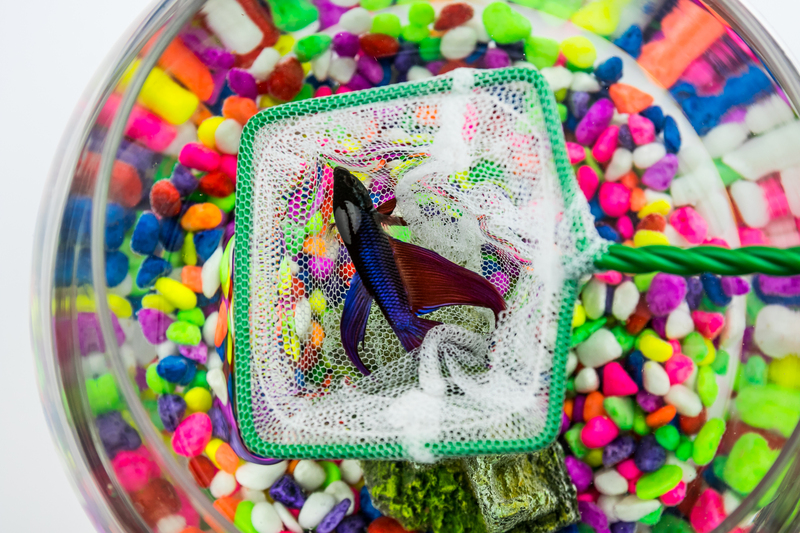Ensure Clothes Stay Fresh with Long-Term Storage
Posted on 31/07/2024
When seasons change or you find yourself with too many clothes to handle, long-term storage becomes a crucial solution to free up space. However, improperly stored clothes can become victims of dust, mold, pests, or fabric deterioration. This article will guide you on how to keep your clothes fresh and intact during long-term storage.
Choose the Right Storage Containers
The first step to ensuring that your clothes stay fresh is selecting the appropriate storage containers. Opt for airtight plastic bins over cardboard boxes. Plastic bins are moisture-resistant and provide a protective barrier against pests. Make sure to avoid vacuum-sealed bags for long-term storage of natural fibers, as these materials need some air to maintain their integrity.

Clean Clothes Thoroughly Before Storing
Never store dirty clothes. Stains and body oils can set into the fabric over time and attract pests. Make sure all your garments are clean and dry before storing them. For extra freshness, consider using fabric softeners or scent boosters during the last wash.
Use Acid-Free Tissue Paper for Delicates
Acid-free tissue paper helps protect delicate fabrics like silk and lace during long-term storage. It can prevent color transfer and fabric deterioration. Place the tissue paper between folds to ensure no areas are exposed to creases or damages that might result from prolonged folding.
Climate-Controlled Storage
If you have valuable items, consider a climate-controlled storage unit. These units keep temperature and humidity levels constant, which is ideal for preventing mold, mildew, and other moisture-related issues. Regular household temperature fluctuations can degrade fabric faster.
Properly Fold and Stack Clothes
Proper folding and stacking can minimize creases and wrinkles. For heavy garments, avoid hanging them as this could stretch the fabric over time. Instead, fold them neatly and place heavier items at the bottom of the storage bin.
Use Wardrobe Boxes for Certain Items
Some clothing items are best stored hanging. Wardrobe boxes feature rods that allow you to hang suits, dresses, and coats, keeping them wrinkle-free. Ensure the garments are not cramped inside the box to allow adequate air circulation.
Mothballs, Cedar Chips, or Lavender Sachets
To deter pests, you can add mothballs, cedar chips, or lavender sachets to your storage containers. Mothballs are effective but have a strong odor. Cedar chips are a natural alternative that repels pests without harsh chemicals. Lavender sachets not only keep pests away but also add a pleasant scent to your textiles.
Regularly Check Stored Clothes
Even in long-term storage, it's a good practice to periodically check your stored items. This will allow you to identify potential issues like moisture buildup, mold, or pest infestation before they cause irreparable damage.
Tips for Special Fabrics
Different fabrics require different care:
- Wool: Store with cedar balls and ensure it's clean as any food stains will attract pests.
- Leather: Store in a cool, dry place; use breathable garment covers.
- Silk: Use acid-free tissue paper and consider placing in a breathable garment bag.
Shoes and Accessories Storage
Shoes should be cleaned, dried, and stored in individual shoe bags or boxes. Stuffing them with acid-free tissue paper helps retain their shape. Store accessories in small, clear containers for easy identification.
Pros and Cons of Long-Term Clothing Storage
Pros:
- Space Management: Frees up room in your living space.
- Protection from Seasonal Wear and Tear: Minimizes potential damage.
- Organizational Clarity: Helps in managing wardrobe seasonally.
- Enhanced Longevity: Proper storage can extend the life of garments.
Cons:
- Maintenance Requirement: Needs regular monitoring.
- Initial Investment: Costs for storage containers and units.
- Potential for Damage: If done improperly, could lead to mold, pest damage, or fabric deterioration.

Takeaways
For long-term storage, the key is to ensure your clothes are clean, dry, and stored in a controlled environment. Use the right storage materials, and be mindful of how different fabrics need to be treated and stored.
Conclusion
Properly storing clothes for the long term involves careful preparation and the right storage solutions. By following these steps and tips, you can ensure your garments remain fresh, intact, and ready for future use. With the right approach, your clothing will look as good coming out of storage as it did when you put it in.







